Insight Blog
Agility’s perspectives on transforming the employee's experience throughout remote transformation using connected enterprise tools.
28 minutes reading time
(5643 words)
The Ultimate Guide to Client Portal Software: Your Essential Guide UPDATE [2025]
Discover the ultimate guide to client portal software. Explore essential insights, key features, and expert tips to choose the right portal for your business needs.
Have you ever wondered how crucial an online self-service portal is for your business?
According to a 2018 Microsoft survey, a staggering 88% of customers expect companies to provide this feature. This eye-opening statistic highlights that client portals or employee portals are no longer just a luxury but a necessity for modern businesses.
In this comprehensive guide to client portals, we'll explore everything you need to know about these essential tools. From understanding their importance to selecting the best software for your needs, this guide covers all the significant subtopics, including different types of client portals and their key features.
In this comprehensive guide to client portals, we'll explore everything you need to know about these essential tools. From understanding their importance to selecting the best software for your needs, this guide covers all the significant subtopics, including different types of client portals and their key features.
Whether you're in the tech industry, retail, or any other field, this guide is crucial for anyone looking to enhance customer satisfaction and streamline operations.
Understanding Client portals Fundamentals
What is a client portal?
In an era where digital transformation is reshaping industries, client portals have emerged as indispensable tools for businesses. A client portal is a secure online platform that allows clients to access services, information, and support from a company. This chapter will delve into the fundamental aspects of client portals, exploring their functionalities, benefits, and essential features.
As companies strive to enhance customer experiences and streamline operations, the implementation of client portals has become increasingly crucial. These platforms not only offer convenience and efficiency for clients but also provide businesses with valuable insights into client interactions and preferences.
By leveraging client portals, companies can build stronger relationships with their clients, foster loyalty, and stay competitive in a rapidly evolving market.
What Is Client Portal Software?
A client portal, also known as a customer portal, is a platform that provides clients with access to project details, service information, and additional resources such as files and billing history.
These web portals are widely utilized across numerous industries to enhance the client experience and streamline interactions. Businesses ranging from commercial enterprises and design studios to insurance companies and banks employ client portals to establish a more efficient communication channel with customers.
They are particularly beneficial for mid-sized and small businesses aiming to improve time management and daily operational efficiency.
Client or customer portal software typically includes the following features:
- A centralized overview screen that provides real-time updates on recent activities, project statuses, and any pending tasks or notifications, helping users stay informed and manage their engagements effectively.
- Integrated messaging and communication features that enable direct interactions between clients and support teams, facilitating quick responses, feedback, and ongoing discussions.
- Features that support teamwork and joint efforts, such as shared workspaces, task assignments, and collaborative document editing, enhancing productivity and coordination among users.
- Options for customizing the portal's appearance to align with the company's brand identity, including logo placement, color schemes, and personalized themes, ensuring a cohesive brand experience.
- A repository of frequently asked questions and self-help resources that empower users to find answers and resolve common issues independently, reducing the need for direct support.
- Facilities for uploading, downloading, and securely storing files and documents, allowing clients to manage and access important information conveniently.
- An organized collection of training materials, guides, and educational resources that assist users in understanding and utilizing the portal's features and services effectively.
- Tools that provide insights into user activity, engagement metrics, and performance reports, enabling businesses to monitor usage patterns and make data-driven decisions.
- Robust security features that protect sensitive information and ensure secure access, including user authentication, data encryption, and permissions management.
- Automated processes and workflows that streamline routine tasks, such as notifications, reminders, and data updates, enhancing operational efficiency and reducing manual effort.
Types of customer portals
Portal type in AgilityPortal refers to the level of access granted to users within a customer portal.
There are three primary portal types available, each catering to different levels of accessibility and security:
- Public Portal: This type of portal allows any user with the link to the customer portal to sign up and access it without prior approval or invitation. It is ideal for scenarios where open access to information or services is desirable, such as public forums, knowledge bases, or general customer support.
- Private Portal: Access to a private portal is restricted to users who the admin of the customer portal has specifically invited. In this setup, users cannot sign up independently; they must receive an invitation to join. This type of portal is well-suited for internal use within organizations, exclusive membership areas, or situations where sensitive information is shared only with a selected group.
- Restricted Portal: In a restricted portal, users are required to sign up and then await approval from an admin before they can gain access. This additional control layer ensures that only verified and approved users can enter the portal. It is useful for portals that handle sensitive data, require strict access control, or involve a vetting process to determine eligibility.
The admin must make a crucial decision regarding the appropriate portal type based on the nature of the customers and the specific requirements of the customer portal. The choice hinges on factors such as the desired level of security, the need for user verification, and the content or services provided.
Why use a client portal?
Client management can be incredibly time-consuming, especially when it involves numerous phone calls, lengthy email exchanges, and managing data across multiple spreadsheets. This often results in inefficient communication and unnecessary back-and-forth between businesses and their clients. To address this challenge, a shared workspace that enhances collaboration and streamlines interactions is essential. A customer portal serves as a valuable solution in this regard.
Here are six important reasons why customer portals are advantageous for both businesses and clients:
- Customer portals consolidate all communication into one platform, eliminating the need for scattered emails and phone calls. For instance, a project management portal can facilitate real-time messaging, reducing response times and keeping all parties aligned on project updates.
- Portals provide a single location for storing and accessing important documents and data. For example, a client can easily download invoices, contracts, and reports without sifting through multiple email attachments or separate files.
- With collaborative tools integrated into the portal, teams and clients can work together more effectively. Features like shared workspaces and document editing allow for simultaneous input and real-time updates, which is beneficial for joint projects and brainstorming sessions.
- Automated workflows and task tracking within a customer portal help manage and monitor tasks more efficiently. For instance, a portal can automatically assign tasks, send reminders, and update statuses, which simplifies project management and ensures deadlines are met.
- Clients can access relevant information and resources anytime, reducing the need for constant follow-ups. A training library or FAQ section within the portal allows clients to find answers and self-service, freeing up time for both parties.
- Customer portals offer robust security features to protect sensitive information. For example, data encryption, user authentication, and access controls ensure that only authorized individuals can view or modify confidential data, enhancing overall data security.
By implementing a customer portal, businesses can significantly improve their client management processes, leading to more efficient operations and a better overall experience for their clients.
Getting Started with Top Portals to Consider
| Portal | Price | Free | Key features |
| AgilityPortal | $3 per user per month | 14 days | |
| Zoho Creator | $8 per user/month (billed annually) | 15 days | |
| Copilot | $29 per internal user/month (billed annually) | 14 days | |
| Clinked | $95 per month (billed annually) | 10 days | |
| FuseBase | We counld find any pricing | We not sure if a free options possible |
|
| Kahootz | £5.50 per user/month(billed annually) | 30 days |
The 5 best client portal software
Your client portal software should enable you to create the precise client experience you aim to deliver.
Here, we've compiled several client portal examples to assist you in achieving this goal, here are some client portal examples:
- AgilityPortal: Excellent for facilitating comms between staff and clients
With AgilityPortal's more then just a client portal app, businesses can seamlessly collaborate with clients through shared documents. This cloud-based platform provides a secure environment for storing and sharing sensitive information, ensuring that all data is protected and easily accessible. By leveraging AgilityPortal, companies can streamline their workflow and enhance collaboration with clients by providing a centralized space for all project-related activities.
AgilityPortal excels in organizing various elements associated with a project, including people, files, documents, tasks, and conversations. This integration allows businesses to manage their projects efficiently within a single platform. AgilityPortal updates document changes and conversation threads in real-time, ensuring that all participants have access to the most current information.
The platform also allows a comprehensive history of custom document for easy access for cleints, document revisions and conversations, allowing users to track changes and revisit previous versions as needed. This robust functionality supports effective project management and fosters transparent communication between businesses and their clients.
Features:
Pricing:
Boost your support team's efficiency and enhance customer satisfaction with a user-friendly self-service portal. Start building your portal today with a 14-day free trial of AgilityPortal and experience the benefits firsthand.
2. Zoho Creator:Good for help desks, client support, project management
Zoho Creator offers a versatile collaboration platform that allows businesses to develop a range of customized portals. Whether you need a portal for client help desks, support systems, project management, HR functions, or order fulfillment, Zoho Creator can cater to these needs. The software also provides extensive customization options, enabling businesses to tailor the portal's appearance with personalized logos, colors, and visuals to align with their brand identity.
One of Zoho Creator's key features is its drag-and-drop design functionality, which eliminates the need for coding skills. Users can effortlessly build and modify their portals without technical expertise. Additionally, the platform includes pre-built AI models designed to automate routine tasks, further streamlining organizational operations and improving efficiency.
Features:
Pricing:
3.Copilot: Good for branded experience
Copilot's client portal software offers a comprehensive suite of features designed to enhance business operations. Key functionalities include messaging, billing, file sharing, contract management, forms, and knowledge bases. Additionally, Copilot supports integrations with other support tools, allowing businesses to connect and streamline their existing systems.
The platform's customizable design options allow businesses to create a branded experience, tailoring everything from visual elements to messaging. Businesses can also set up automations for routine tasks, such as sending welcome messages, processing intake forms, and scheduling meetings, ensuring a more efficient and cohesive client interaction.Features:
Pricing:
- Free Trial: 14 days
- Starter Plan: $29 per internal user per month (billed annually)
- Professional Plan: $69 per internal user per month (billed annually)
- Advanced Plan: $119 per internal user per month (billed annually)
- Supersonic Plan: Contact Copilot for pricing
All plans are billed annually.
4.Clinked: Good for communication
Clinked provides businesses with the flexibility to either brand a pre-designed client portal template or create a completely custom portal to meet their specific needs. Regardless of the choice, Clinked's portals facilitate streamlined communication between customers and internal teams, with administrators having full control over content visibility, editing, and download permissions.
The platform supports various communication channels, including group chats, one-on-one messages, and public posts, allowing businesses to effectively disseminate information across company pages. Additionally, Clinked offers a mobile app, ensuring that team members and clients stay informed and connected even when they are away from their desktops.
Features:
Pricing:
- Free Trial: 10 days
- Lite Plan: $95 per month for up to 100 members (billed annually)
- Standard Plan: $239 per month for up to 100 members (billed annually)
- Premium Plan: $479 per month for up to 250 members (billed annually)
- Enterprise Plan: Contact Clinked for pricing (1,000+ members)
All plans are billed annually.
5.FuseBase: Good for internal and external knowledge base
FuseBase, previously known as Nimbus, is a platform that facilitates organization and collaboration for customers and agents within a single space. Businesses can create a branded experience with customizable built-in chat features, enhancing the interaction and engagement with clients. The platform also gathers data and processes feedback, providing valuable operational insights for business improvement.
With FuseBase, businesses can invite customers into the portal, share videos or screenshots, create guest accounts, and manage workplace access. It also allows users to manage both internal and external knowledge across various workspaces, making it a versatile tool for maintaining organized and efficient operations.
Features:
Pricing:
- For personalized guidance and to explore how FuseBase can meet your specific needs, take advantage of the free consultation offered.
- Simply contact FuseBase to schedule your session and discover how the platform can enhance your business operations.
6.Kahootz: Good for peer-to-peer support and agent insight.
Kahootz offers an online client portal that serves as a centralized and secure communication hub, enabling customers to manage their accounts and collaborate directly with businesses. The platform prioritizes data security and maintains transparency by providing customers with detailed insights into their account activities.
Kahootz's software suite includes a variety of features such as forums, document management, surveys, and content creation tools. Businesses can upload rich media content like videos and blog articles to address common customer inquiries. The discussion forum feature facilitates peer-to-peer support and allows agents to provide valuable insights, enhancing the overall user experience.
Features:
Pricing:
- Free Trial: 30 days
- Starter Plan: £5.50 per user per month (billed annually)
- Professional Plan: £11.55 per user per month (billed annually)
- Enterprise Plan: £10.97 per user per month (billed annually)
All plans are billed annually.
Advanced Strategies for Selecting a New Client Portal
Selecting a client portal involves more than just choosing a software solution that fits your budget and basic requirements.
To ensure the chosen portal truly meets your business needs and enhances your customer experience, you must employ advanced strategies and techniques. This chapter will explore sophisticated methods for selecting a new client portal, provide expert insights, and examine case studies that demonstrate effective application of these strategies.
Additionally, research shows that businesses that invest in well-chosen client portals see significant returns: a study by Forrester Research indicates that companies using advanced client portals experience up to a 30% increase in customer satisfaction and a 25% improvement in operational efficiency.
By understanding these metrics and applying strategic selection techniques, businesses can better understand how portal selection process works.
How to Select
1. Conduct a Comprehensive Needs Analysis
Before diving into the selection process, it's essential to perform a thorough needs analysis. This involves:
- Mapping User Requirements: Identify the specific needs of different user groups within your organization. For example, customer support teams might need robust ticketing features, while sales teams might require integration with CRM systems.
- Defining Key Performance Indicators (KPIs): Establish KPIs that align with your business objectives. These might include metrics such as user satisfaction, ticket resolution time, or system uptime.
- Evaluating Existing Systems: Assess any current systems for their strengths and weaknesses. Understanding what works and what doesn't can provide valuable insights into what you need from a new portal.
2. Evaluate Integration Capabilities
Modern client portals need to integrate seamlessly with existing business systems. Consider the following:
- APIs and Connectors: Look for portals that offer robust APIs and pre-built connectors for common business tools such as CRM, ERP, and marketing automation systems.
- Data Synchronization: Ensure the portal supports real-time data synchronization with other systems to avoid data silos and maintain consistency across platforms.
- Customization Options: Evaluate the extent to which the portal can be customized to fit into your existing tech stack and workflows.
3. Prioritize Security and Compliance
With increasing concerns over data breaches and privacy regulations, security should be a top priority. Key aspects include:
- Encryption Standards: Ensure that the portal uses strong encryption protocols for data at rest and in transit.
- Compliance: Verify that the portal complies with relevant regulations such as GDPR, CCPA, and HIPAA, depending on your industry and location.
- Access Controls: Check for advanced access control features like role-based access, multi-factor authentication, and audit trails.
4. Assess Scalability and Performance
Your client portal should be able to grow with your business. Consider:
- Scalability: Evaluate the portal's ability to handle increasing amounts of data and user traffic without compromising performance.
- Performance Metrics: Look into performance benchmarks and load testing results to ensure the portal meets your performance requirements under various conditions.
- Cloud vs. On-Premise: Decide whether a cloud-based or on-premise solution better fits your scalability needs. Cloud solutions often offer better flexibility and lower upfront costs, while on-premise solutions might offer more control and customization.
5. User Experience and Interface Design
A portal's usability directly impacts its adoption and effectiveness. Focus on:
- Ease of Use: Ensure the interface is intuitive and user-friendly. Conduct user testing to gather feedback on navigation, design, and overall usability.
- Mobile Compatibility: Confirm that the portal provides a consistent experience across various devices, including smartphones and tablets.
- Customization: Look for options to customize the user interface to align with your branding and provide a tailored experience for different user groups.
Key Factors to Consider When Selecting a Client Portal
Since the term "client portal" covers a broad range of software solutions, choosing a portal that aligns precisely with your specific use cases and needs is essential.
A client portal can serve as a digital sales hub for sales teams. This type of portal centralizes all sales materials, making it easier for clients to access relevant information in one place. It enables secure file sharing and real-time document collaboration, crucial for advancing deals. Sales teams can also use the portal to develop mutual action plans, distribute pricing quotes, and manage order forms. Additionally, it provides a streamlined way to respond to security reviews and compliance inquiries.Customer experience teams, on the other hand, use client portals as comprehensive service platforms. These portals facilitate the onboarding process for new clients, making it smoother and more efficient. They also manage customer support tickets, allowing for effective issue resolution. A well-designed client portal provides access to a knowledge base, enabling clients to find answers to their questions independently. Furthermore, it supports project management and execution of implementation plans while offering tools to share progress reports and conduct business reviews.
Client portals offer significant benefits for finance and legal departments in managing financial and contractual processes. They can be used to issue invoices and track payment collections securely. The portal also facilitates collecting payments and signatures for contracts and agreements. Additionally, it serves as a central repository for hosting and managing legal documents such as contracts and non-disclosure agreements (NDAs).
Understanding these specific uses will help you select a client portal that fits your organization's needs and enhances overall efficiency.
Follow us and access great exclusive content everyday: Follow us on Google News
Expert Insights on Selecting a Client Portal
To offer authoritative advice on selecting a new client portal, we consulted leading experts in the field. Here are some key takeaways:
"When selecting a client portal, it's crucial to focus not just on the features but on how those features integrate with your existing workflows. A portal should enhance, not disrupt, your operations."
— Jane Smith, Senior IT Consultant at Tech Advisory Group
"Security is non-negotiable. With increasing cyber threats, you need to ensure that the client portal you choose adheres to the highest security standards and can handle your specific compliance requirements."
— John Doe, Cybersecurity Expert at SecureTech
"Scalability is vital. Opt for a portal that grows with your business needs and offers the flexibility to adapt to changing requirements."
— Emily Johnson, CEO of Growth Solutions Inc.
The Future of Client Portals for Client Collaboration
Current Trends in Client Portal Software
The landscape of client portal software is rapidly evolving, fueled by continuous technological advancements and shifting client expectations.
As businesses strive to keep pace with these changes, they must adapt to new features and capabilities that enhance user experience and operational efficiency. For example, the adoption of cloud-based solutions has increased by 40% in the last three years, reflecting a growing preference for scalable and accessible platforms.
Additionally, a report by Gartner highlights that 70% of organizations are investing in advanced client portal features, such as AI-driven analytics and integrated communication tools, to meet the rising demand for personalized and responsive service.
This dynamic environment underscores the importance of staying informed about emerging trends and selecting a client portal that aligns with current and future needs.
Here are some of the most notable trends shaping the future of client portals:
1. Enhanced Integration with AI and Automation
Artificial Intelligence (AI) and automation are becoming increasingly integral to client portals. AI-driven features, such as chatbots and virtual assistants, are streamlining client interactions and providing instant support. Automation tools are handling repetitive tasks, such as generating reports and updating client records, which boosts efficiency and reduces manual errors.
2. Advanced Data Analytics and Insights
Client portals are incorporating advanced data analytics to provide deeper insights into client behavior and interactions. Predictive analytics and machine learning algorithms help businesses understand client needs and preferences, enabling more personalized and proactive service.
3. Emphasis on Mobile-First Design
With an increasing number of clients accessing services via mobile devices, client portals are adopting mobile-first designs. These designs ensure that portals are fully functional and user-friendly on smartphones and tablets, providing a seamless experience across all devices.
4. Enhanced Security Features
As data security concerns continue to rise, client portals are integrating advanced security measures. Features such as multi-factor authentication (MFA), end-to-end encryption, and regular security audits are becoming standard to protect sensitive client information.
5. Integration with Collaborative Tools
Client portals are increasingly integrating with collaborative tools like Slack, Microsoft Teams, and project management software. This integration facilitates real-time communication and collaboration, making it easier for clients and businesses to work together on projects and support requests.
Challenges and Opportunities
As client portals evolve, they present both challenges and opportunities for businesses. Here's a comprehensive look at what lies ahead:
Challenges:
- Data Privacy and Compliance: With stringent data protection regulations such as GDPR and CCPA, ensuring compliance can be challenging. Businesses must continuously update their portals to meet regulatory requirements and protect client data.
- Integration Complexity: As client portals integrate with a growing number of tools and systems, the complexity of managing these integrations increases. Ensuring seamless interoperability without compromising system performance or security can be difficult.
- User Adoption: While advanced features enhance functionality, they can also introduce complexity. Ensuring that clients and internal teams adopt and effectively use these features is essential for maximizing the benefits of a client portal.
Enter your text here ...
Opportunities:
- Enhanced Client Engagement: By leveraging AI and advanced analytics, businesses can offer more personalized and engaging client experiences. This personalized approach can lead to higher client satisfaction and stronger relationships.
- Operational Efficiency: Automation and data analytics provide opportunities to streamline operations, reduce manual tasks, and improve decision-making. This efficiency can lead to cost savings and better resource allocation.
- New Revenue Streams: Integrating with collaborative tools and offering premium features or services within the portal can open new revenue streams. Businesses can explore opportunities such as subscription models or value-added services.
You may also like: Best Apps for Employees: UPDATED 2022 – A Complete Guide
Chapter 5: Frequently Asked Questions
What is a client portal?
A client portal is a secure online platform that allows clients to access and interact with their service provider or business. It typically includes features like document sharing, support ticket management, and real-time communication tools. The portal serves as a centralized hub where clients can manage their accounts, collaborate on projects, and access important information.
How does a client portal improve customer experience?
A client portal enhances the customer experience by providing a user-friendly and accessible platform for managing interactions with a business. It allows clients to easily access documents, track support requests, and receive updates in real-time. This convenience reduces the need for direct communication and speeds up resolution times, leading to higher client satisfaction.
What features should I look for in a client portal?
When selecting a client portal, consider features such as customizable themes, reporting and analytics, single sign-on capabilities, and access permissions for articles and documents. Other important features include a knowledge base, community forums, and real-time chat functionality. These elements contribute to a comprehensive and effective client portal.
How secure are client portals?
Client portals are designed with strong security measures to protect sensitive information. Look for features like encryption, secure login options (e.g., single sign-on and multi-factor authentication), and regular security audits. These features ensure that data is protected from unauthorized access and breaches.
Can client portals integrate with other systems?
Yes, many client portals offer integration capabilities with other systems such as CRM software, project management tools, and financial platforms. Integration ensures that data is synchronized across different systems, streamlining workflows and improving overall efficiency.
How can I customize my client portal?
Customization options vary by platform but typically include adjusting themes, configuring user permissions, and setting up personalized dashboards. Some portals also allow for the integration of custom features and functionalities to better align with your business needs.
What are the benefits of using a client portal for project management?
A client portal facilitates project management by centralizing all project-related information and communications in one place. This includes managing tasks, sharing documents, and tracking progress. Real-time updates and historical records help ensure that all stakeholders are aligned and informed throughout the project lifecycle.
How do I choose the right client portal for my business?
Selecting the right client portal involves evaluating your specific business needs and the features offered by different platforms. Consider factors such as ease of use, security, integration capabilities, and customization options. It's also helpful to read reviews, request demos, and consult with experts to make an informed decision.
How can I ensure a smooth transition to a new client portal?
To ensure a smooth transition, plan the migration carefully by mapping out your current processes and data. Provide training for users to familiarize them with the new system and address any potential issues during the transition. Additionally, work with the client portal provider to ensure a seamless setup and integration with existing systems.
Free ebook: How To Get Your Intranet Off The Ground
Wrapping up
In today's digital landscape, a client portal is an essential tool for enhancing client interactions and streamlining business processes. By providing a centralized, secure platform for communication, document management, and project collaboration, client portals offer significant benefits to both businesses and their clients.
Understanding the core features and benefits of client portals, as well as the specific needs of your organization, is crucial in selecting the right solution.
Key Takeaways:
- Centralized Communication: A client portal centralizes all client interactions, making it easier to manage communication and keep track of important documents and updates. This leads to more efficient project management and improved client satisfaction.
- Enhanced Security: With robust security measures such as encryption and secure login options, client portals ensure that sensitive information is protected from unauthorized access and breaches.
- Integration Capabilities: Many client portals offer seamless integration with other systems, such as CRM and project management tools, allowing for synchronized data and streamlined workflows.
- Customization Options: The ability to customize themes, configure user permissions, and set up personalized dashboards helps tailor the portal to your specific business needs and enhances user experience.
- Real-Time Updates: Features like real-time document collaboration and progress tracking keep all stakeholders informed and aligned, facilitating smoother project execution.
To leverage these benefits and implement a client portal that aligns with your business goals, consider evaluating several options and selecting a platform that meets your specific requirements. A well-chosen client portal can significantly improve your operational efficiency, enhance client engagement, and contribute to overall business success.
Among the many client portal solutions available, AgilityPortal stands out as an exceptional choice. Its comprehensive feature set includes customizable themes, advanced reporting and analytics, single sign-on options, and real-time updates on document changes and conversations.
AgilityPortal's secure environment for document sharing and its seamless integration capabilities make it an ideal solution for businesses seeking to enhance collaboration and streamline operations. Additionally, its user-friendly interface and robust support ensure a smooth transition and effective utilization.
Categories
Blog
(2600)
Business Management
(319)
Employee Engagement
(207)
Digital Transformation
(173)
Intranets
(119)
Growth
(118)
Remote Work
(61)
Sales
(48)
Collaboration
(37)
Culture
(29)
Project management
(29)
Customer Experience
(26)
Knowledge Management
(21)
Leadership
(20)
Comparisons
(5)
Ready to learn more? 👍
One platform to optimize, manage and track all of your teams. Your new digital workplace is a click away. 🚀
Free for 14 days, no credit card required.



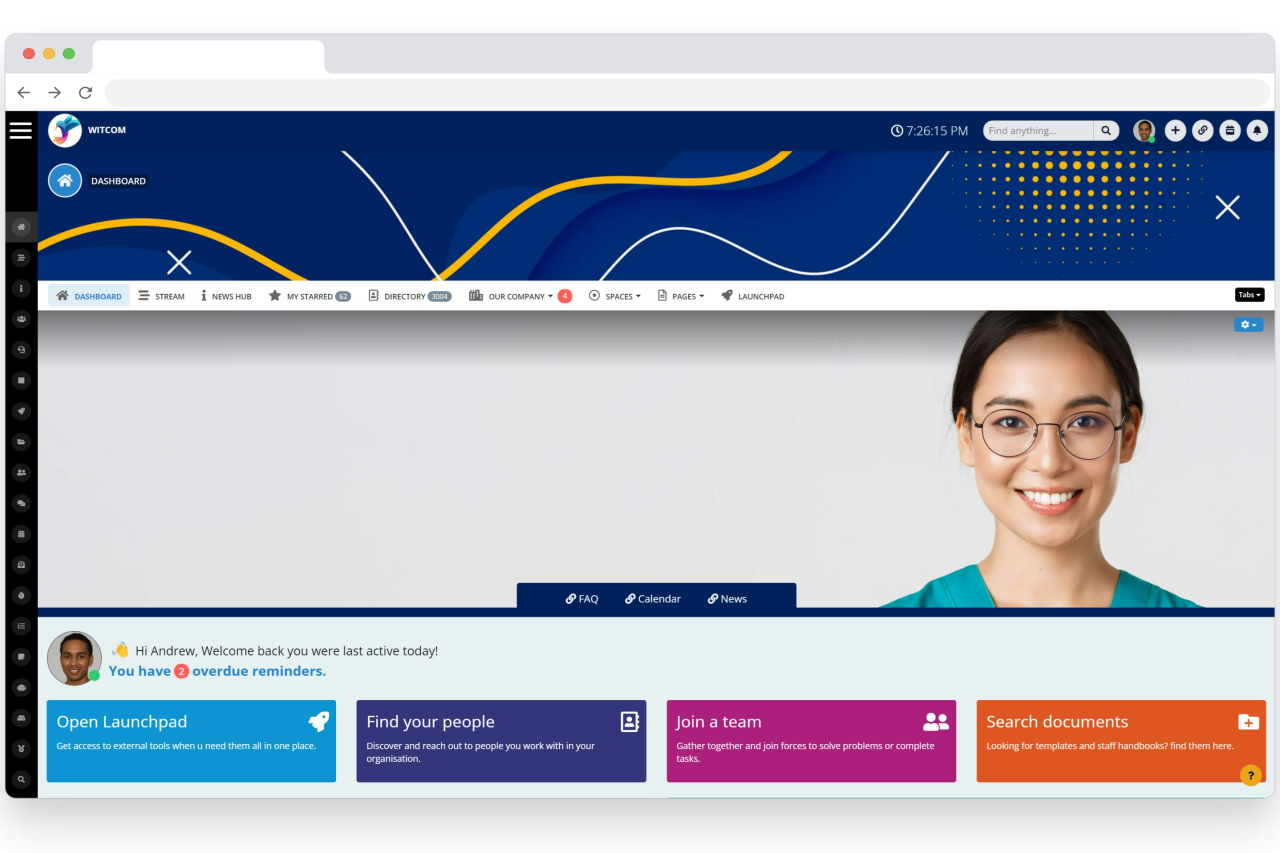
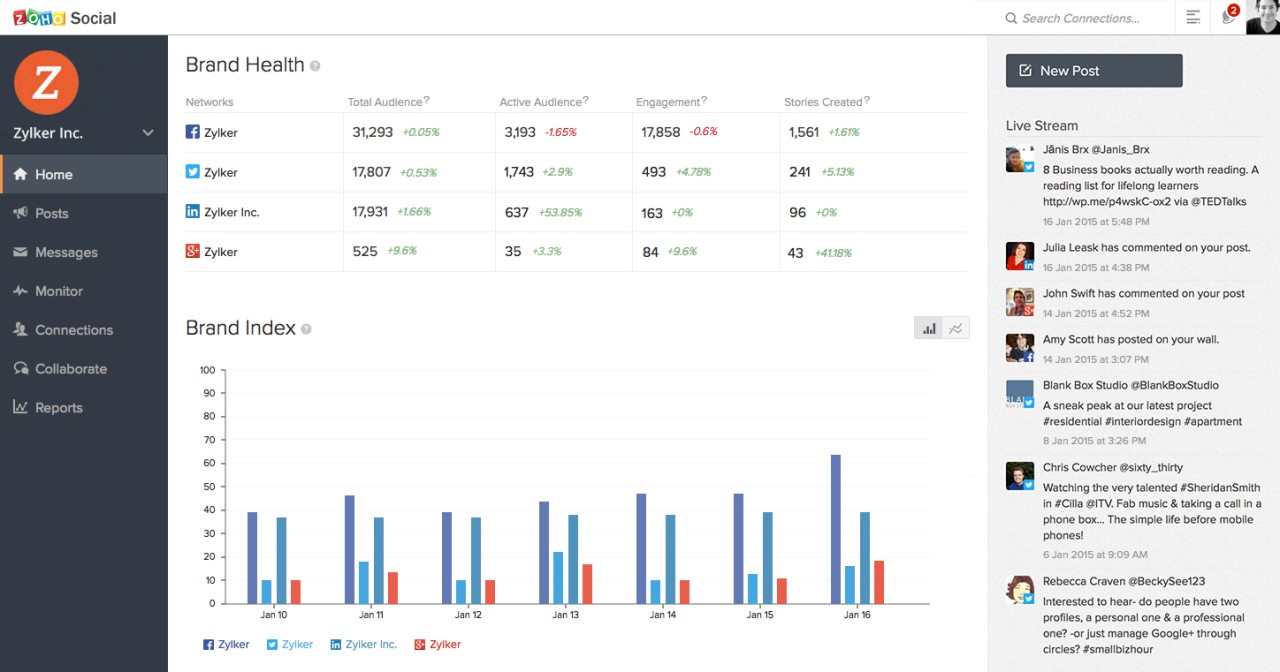
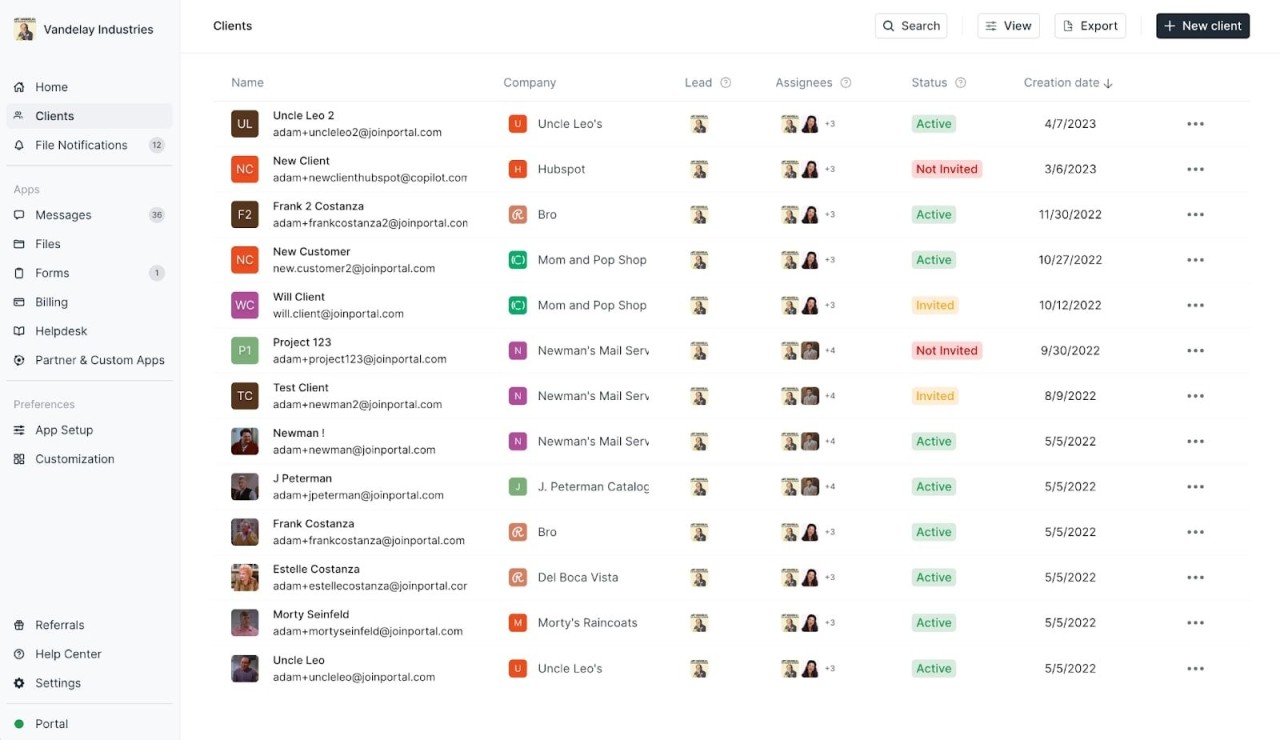
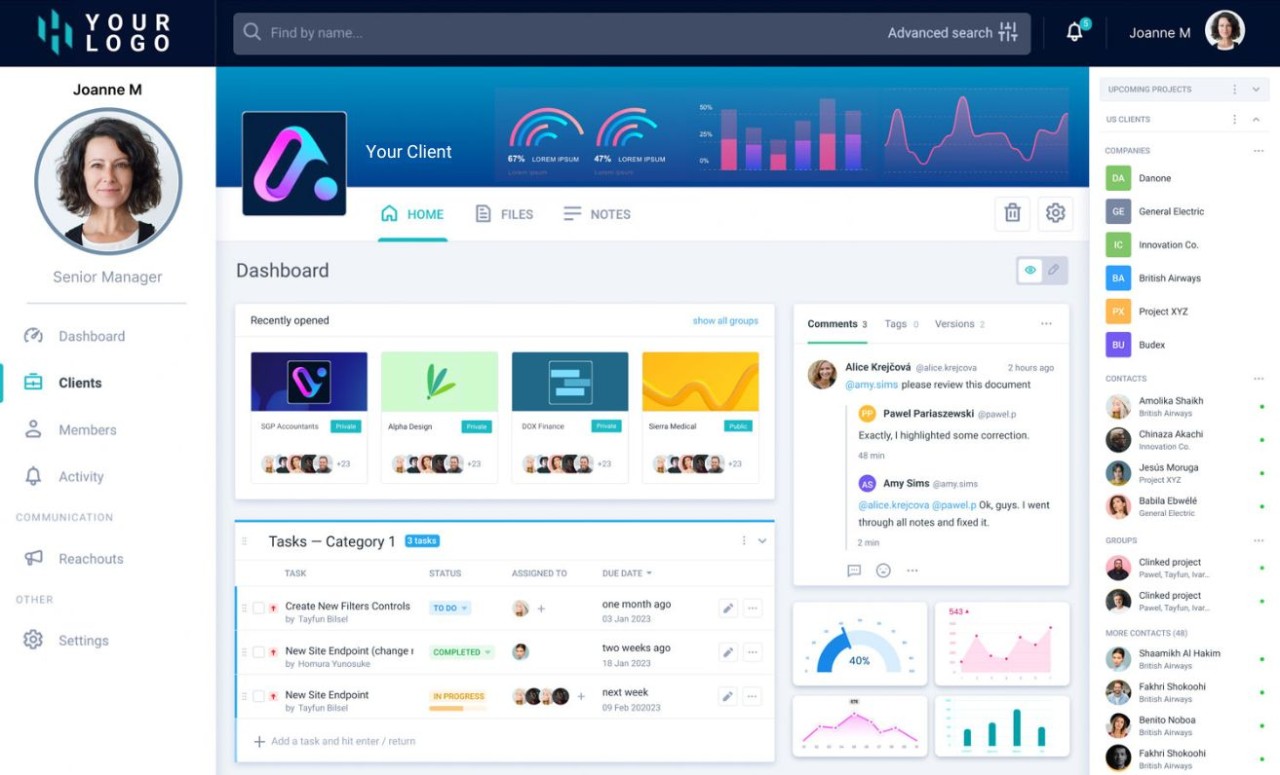
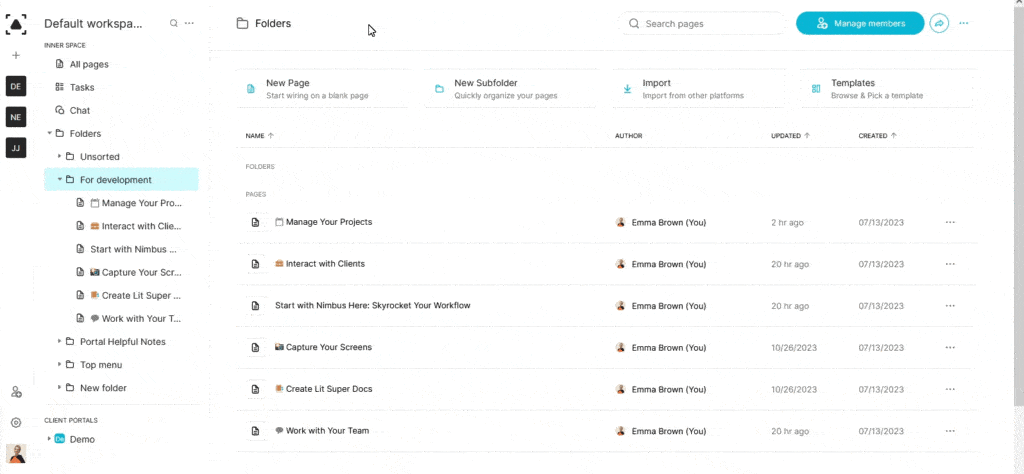
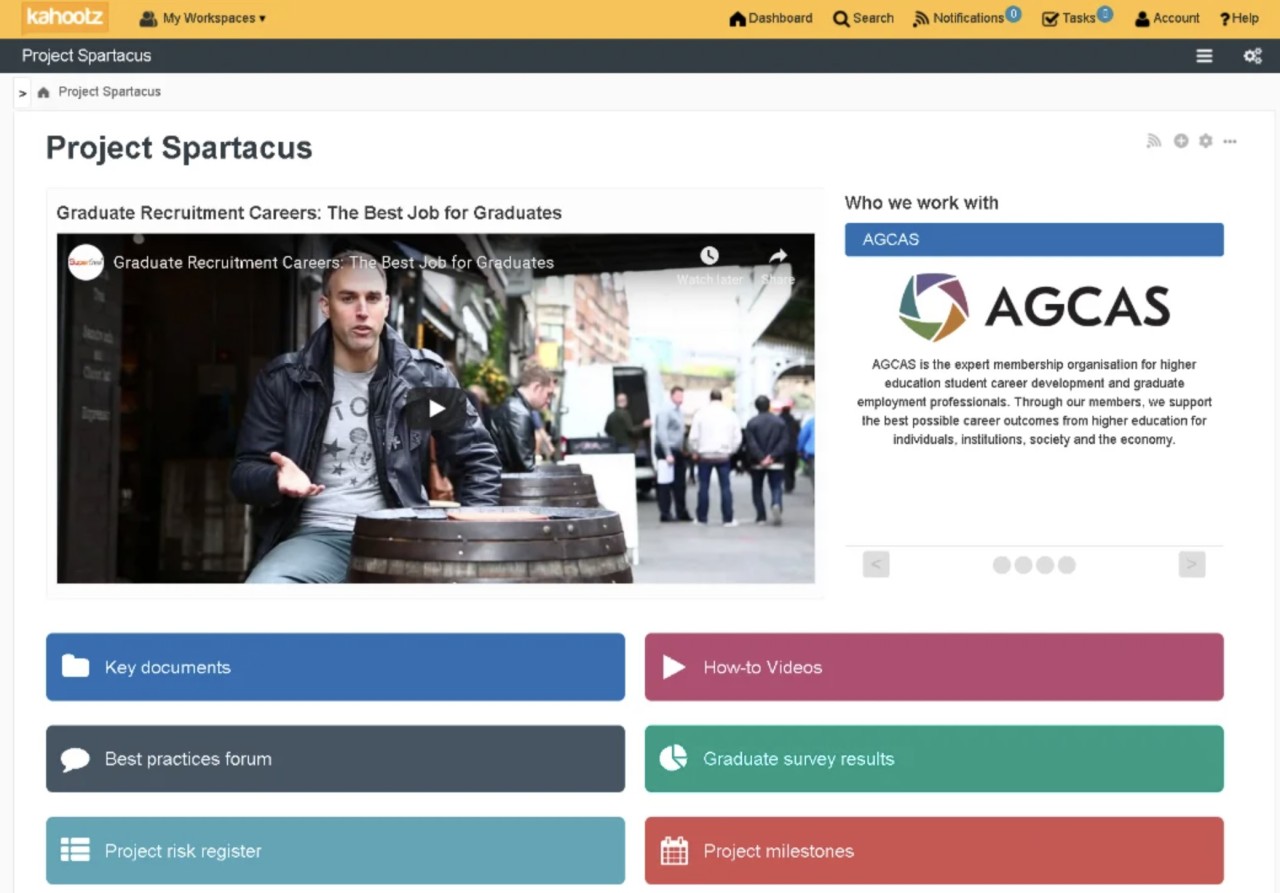








![Follow Google News The Ultimate Guide to Client Portal Software: Your Essential Guide UPDATE [2025] - Insight Blog](/images/Follow Google News.png)
![rss-subscribe The Ultimate Guide to Client Portal Software: Your Essential Guide UPDATE [2025] - Insight Blog](/images/rss-subscribe.png)